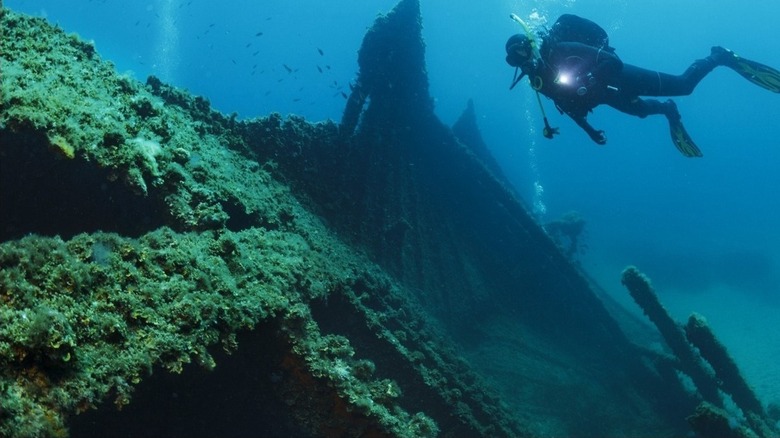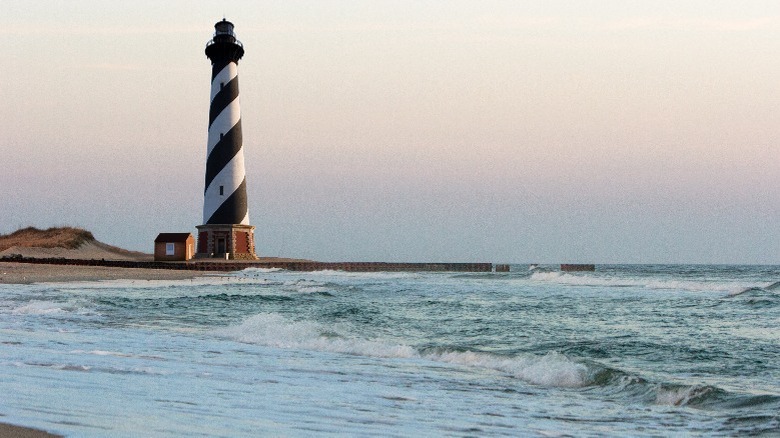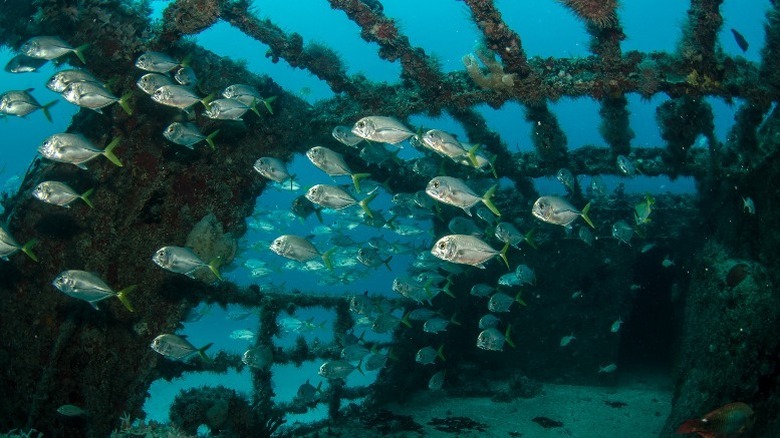Visit This US State If You're A Shipwreck Fanatic
Following the Titan tragedy, where a submersible imploded on a voyage to see the Titanic, it's fair to say that shipwrecks have been well and truly in the spotlight. While the British passenger liner, which famously sank after hitting an iceberg off the coast of Newfoundland in 1912, remains the most renowned site, it is also among the least accessible. For those wishing to see some shipwrecks, a more straightforward option is visiting the U.S. state of North Carolina.
Known as "The Graveyard of the Atlantic," the treacherous waters around the region's Outer Banks — a vast chain of barrier islands — are home to at least 1,000 shipwrecks and possibly many more. So, why is this stretch of coastline so dangerous? First and foremost, there are the obvious navigational challenges of shifting sands, shallow waters, and strong currents — not to mention some severe storms.
However, to fully understand the hazards, we need to go back to the days of the first English settlers. At that time, among numerous other perils, they also had to contend with pirates. One of the wrecks, Queen Anne's Revenge, is believed to have belonged to the infamous Blackbeard. Later, during the World Wars, many more ships sank in the area — particularly during the Battle of the Atlantic in World War II.
The appeal of ancient wrecks
Today, these ghostly vessels continue to hold an ongoing fascination. Rather than considering them macabre, many shipwreck enthusiasts see the sites not only as maritime memorials but as offering an important microcosm of history. They are not alone in that view, either.
For the past few years, the National Oceanic and Atmospheric Administration (NOAA) and its partners have been collaborating with the local community to survey the numerous shipwrecks in the region. This has created a valuable archive of information that can be accessed online by anyone with an interest in the subject.
Also, for those who wish to dive deeper still, there are three museums devoted to the area's nautical history: the North Carolina Maritime Museum in Beaufort, the North Carolina Maritime Museum at Southport, and the Graveyard of the Atlantic Museum in Hatteras. While the latter is currently closed for renovation, the museum's redesign promises to be well worth the wait. As well as showcasing more artifacts from its collection, there will be some new exhibits and innovative interactive elements. One of the latter will allow visitors to experience rowing through the dangerous water via simulations.
Seeing a shipwreck up close
For more adventurous souls who wish to see a shipwreck with their own eyes, many can be reached by scuba diving. However, given the potentially hazardous nature of the sites, connecting with a local diving center is always a good idea. Several of these offer a combination of boat charters and scuba diving experiences. Among the most renowned are Aquatic Safaris, Discovery Diving, the Olympus Dive Center, the Roanoke Island Dive Shop, the Carolina Dive Center, and Water World.
Alternatively, a few of the wrecks, such as the 19th-century U.S.S. Huron in the Nags Head area, can be visible even when swimming, snorkeling, or stand-up paddle-boarding. Again, safety should always be paramount, and going with a buddy is advisable. For a different option, you may consider seeing the shipwrecks from high above by booking an air tour with Barrier Island Aviation.
In any event, fueled by the ongoing Titanic mania, the fascination with shipwrecks shows no sign of slowing down. For many people, these eerie ghost ships, languishing at the bottom of the ocean, will always have an irresistible hold. If that strikes a chord with you, too, there can be few better places to visit than the coastline of North Carolina.


